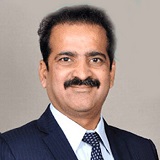Understanding Gynecomastia: Causes, Symptoms, and Treatment
The unusual growth of breast tissue in male is a condition called gynecomastia. The primary reason is the hormonal imbalance between estrogen and testosterone. This condition has a lot of impact on self-confidence and body image of males. And it’s important to understand it is not a reflection of personal failure or lack of effort.
And you’re not alone. Many men face this challenge, and it’s nothing to be ashamed of. It is a medical issue. The good news is that there are effective treatments are available.
In this article, we are going to explore the causes, symptoms, and treatment options for gynecomastia, including expert insights from Dr. Shashank Shah at Laparo Obeso Centre, Pune, India.
What Are the Symptoms Of Gynecomastia
Understating and identifying these symptoms of gynecomastia can help in seeking timely treatment.
Here are some of the key symptoms:
- Swollen breast tissue in one or both breasts
- Tenderness or pain in the chest area
- A firm lump beneath the nipple
- Uneven breast growth
If you’re experiencing these symptoms, it’s important to consult with a healthcare expert. You may consult Dr. Shashank Shah at Laparo Obeso Centre, Pune, India, to determine the best course of action. He is considered one of the best surgeon for Gynecomastia in India.
Let’s Look at What Causes Gynecomastia?
Here are several factors that contribute to gynecomastia, including:
- Hormonal Imbalance
One of the primary cause of gynecomastia is a shift in hormone levels.
In males, testosterone is the dominant hormone. In females, estrogen is the dominant hormone.
But when estrogen levels rise or testosterone drops, breast tissue can grow.
This hormonal imbalance may occur during puberty, aging, or as a result of medical conditions or medications.
- Medications
Certain medications can trigger gynecomastia, such as:
- Anti-androgens (used for prostate issues)
- Anabolic steroids (sometimes misused by athletes)
- Some antidepressants, antipsychotics, and heart medications
If you’re on these medications and notice breast growth, you should consult your doctor for further guidance.
- Health Conditions
Gynecomastia can also be linked to other health conditions, such as:
- Liver disease: Liver problems can affect hormone metabolism, which can lead to breast tissue growth.
- Kidney disease: Those on dialysis may experience hormone imbalances that cause gynecomastia.
- Hyperthyroidism: An overactive thyroid can produce excess hormones, influencing breast tissue.
- Hormone-producing tumors: Tumors affecting hormone levels can lead to gynecomastia.
- Obesity
Sedentary lifestyle combined with a high-calorie diet rich in unhealthy fats and sugars CAN lead to more fat accumulates in the chest area.
These increasing fat tissues, particularly around the abdomen and chest, can convert androgens (male hormones) into estrogens (female hormones).
More estrogen in men suppresses testosterone production.
This hormonal imbalance — higher estrogen and lower testosterone levels, further leads to fat accumulation in the chest area.
Plus, consuming a diet high in processed foods, sugars, and unhealthy fats leads to insulin resistance, which further increases estrogen levels.
Obesity-related gynecomastia can be managed with weight loss and lifestyle changes
Treatment Options for Gynecomastia
Cause and severity of the condition is what helps in deciding the treatment for gynecomastia
While some cases resolve without intervention, others may require medical or surgical treatment.
Let’s Look At The Non-Surgical Treatments
For many men, gynecomastia does not require surgery. Here are some non-surgical approaches:
- Medications
- Hormonal therapies, such as aromatase inhibitors or selective estrogen receptor modulators (SERMs), can help restore hormone balance. These medications are particularly effective when gynecomastia is caused by a hormone imbalance.
- Lifestyle Changes
- Weight loss through diet and exercise can reduce breast tissue if obesity is the primary cause. Avoiding substances like alcohol or recreational drugs can also help maintain hormone balance.
Surgical Treatments
If gynecomastia persists or is severe, surgical treatment may be recommended. Two main surgical procedures are used to treat gynecomastia:
- Liposuction
- Liposuction removes excess fat from the chest area and is ideal for cases where fat is the primary cause of breast enlargement.
- Mastectomy
- A mastectomy involves the removal of glandular breast tissue to flatten the chest. Often, this is combined with liposuction for optimal results. This surgery is typically performed by experienced surgeons. Dr Shashank Shah and his team at Laparo Obeso Centre, Pune, India, specialize in treating gynecomastia.
Post-Surgery Outcomes
Patients who undergo surgery for gynecomastia typically report high satisfaction with the results.
The procedures restore a flatter chest contour, leading to improved self-confidence and quality of life. Recovery is generally quick, and complications are rare.
Why Choose Laparo Obeso Centre, Pune, India?
When considering treatment for gynecomastia, it’s important to consult an experienced professional.
Dr. Shashank Shah at Laparo Obeso Centre, Pune, India, is a leading expert in treating gynecomastia and other obesity-related conditions.
With years of experience and cutting-edge techniques, Dr. Shah offers personalized treatment plans that prioritize patient comfort and effective results.
Taking Control of Gynecomastia
It’s important to understand that gynecomastia is a common condition that affects men of all ages, but it’s also highly treatable.
Your feelings are valid, and it’s okay to seek help, both for physical treatment and emotional support.
Remember, taking steps to address this issue, whether through lifestyle changes, medical interventions, or simply reaching out for support, shows strength and self-care.
Everyone deserves to feel comfortable and confident in their own body.
If you’re dealing with gynecomastia, know that there is hope and help available, and that you have nothing to be ashamed of in seeking that help.
If you or someone you know is experiencing gynecomastia, consult with Dr. Shashank Shah at Laparo Obeso Centre, Pune, India, to explore your options.
With the right treatment plan, you can regain confidence and improve your quality of life.
In today’s world, being informed about your health and taking action can make a big difference.

